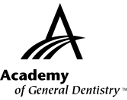|
Exercise No. 356
Subject Code: 257
Caries Detection and Prevention
The 15 questions for this exercise are based on the article, “Survey of fluoride levels in vended water stations,” on pages 47-50. This exercise was developed by Gustav Gates, DDS, MAGD, in association with the General Dentistry Self-Instruction committee.
|
Reading the article and successfully completing this exercise will enable you to:
- recognize the correct fluoride concentration for the effective treatment of decay,
- understand the difference between water from a tap and water from vended water stations (VWS) with regard to fluoride concentration, and
- identify the clinical implications of prescribing fluoride with regard to caries prevention and fluorosis.
|

